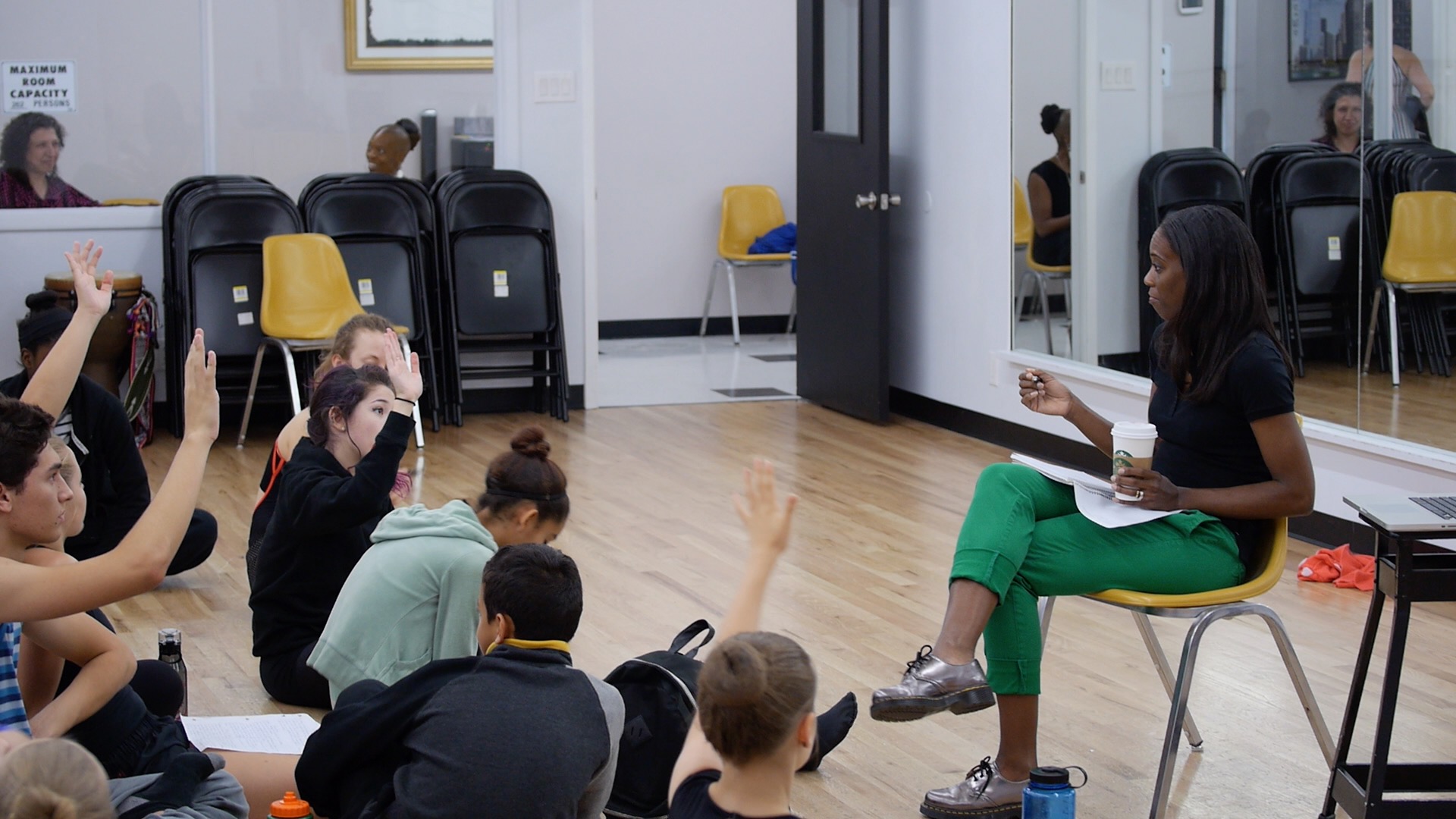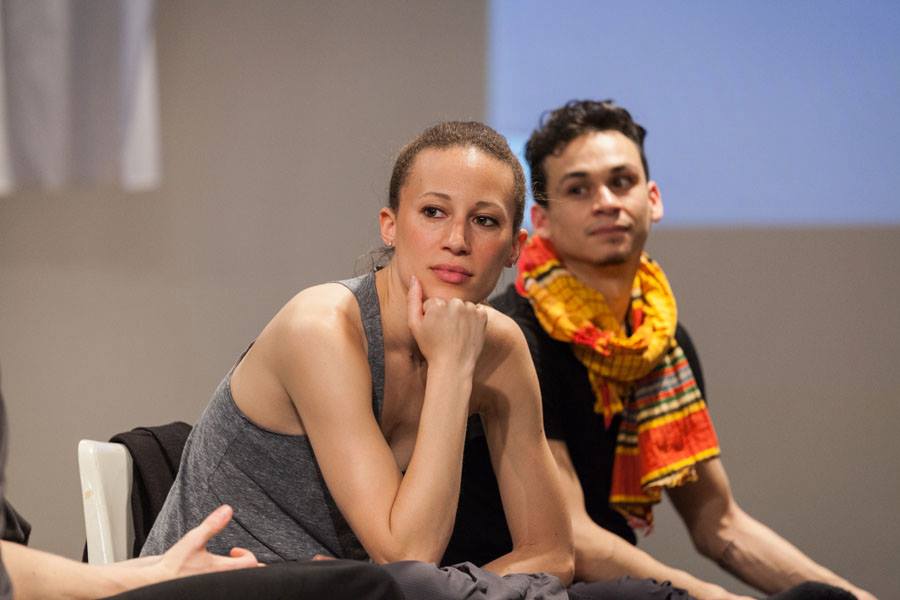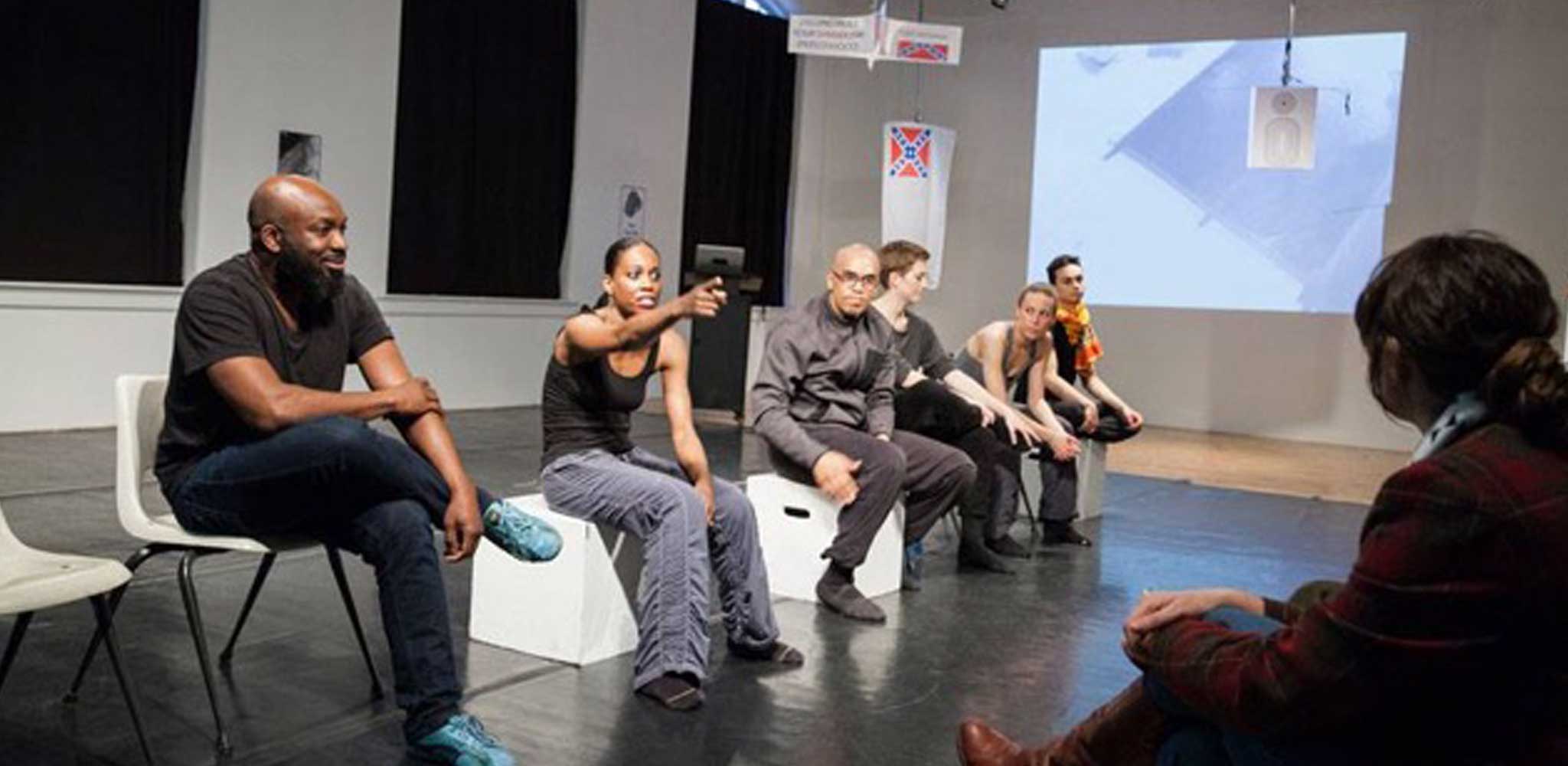


wdd_header_images2048x1000c
wdd_pgheader_2048x1000working
wdd_pgheader_2048x1000working



Your conversation and the sharing of your work was such an incredible inspiration. I cannot thank you enough for all that you did to open a “collective imagination” at USM and bring so many important insights and questions to the whole community.
—Candace Salyers, MFA, PhD
Assistant Professor of Dance
University of Southern Mississippi
Hattiesburg, MS
With Wideman Davis, college students learn performance, choreography, and related research from the perspectives of professional artists who have created work around the country and toured around the world.
Through projects such as Migratuse Ataraxia and past-carry-forward, the academic community can explore the connections between historical events and life today, as interpreted through an African American lens. Inspired by the writings of W. E. B. Du Bois, and based on our research of the Great Migration to the Harlem Renaissance, past-carry-forward poses an important and timely question: If the “veil” of racism could be lifted—in the 1920s, and maybe even today—what intimate truths could we learn about each other and the magnificent offerings of our creative humanity? As artists and academicians, we have pursued related areas of research on hegemonic social constructs, particularly gender, race, and class. Read bios for Tanya and Thaddeus, learn about our model, as well as our vision and lineage.
Wideman Davis Dance designs residencies that have lasting impact for college campuses and their surrounding communities. Whether lectures, talks, or panels, our discourse and artistic work can integrate the lens of dance into courses dealing with social structures, such as:
• Body, gender, and sexuality
• Privilege, social identity, and structures of power
• Visual critical studies, or the study of visual culture through the lens of dance
• Politics of class and race in dance
• Gendered ritual behaviors in dance
Particularly if they occur in conjunction with a performance, residencies and lectures can align with courses in African American studies such as:
• Politics of Black popular culture
• Performing memory
• Unsettling whiteness through performance
As Associate Professors of Theatre and Dance and African American Studies at the University of South Carolina we have designed a range of courses. Learn More.
Read stories about our impact and view the list of our past residency partners.
• In 2020 and 2021 Wideman Davis Dance implemented a two-month virtual residency at the University of Southern Mississippi that included artist talks, panel discussions, community conversations, and performances, as well as these courses:
– Dancing, Choreographing, and Filming Histories of Spaces: A Two-part Workshop
– Bodies Moving, Public Spaces, Architecture and Access
– Public Art and Dance as Radical Labor
– The 49th Vice President of the United States: Invisibilization, Performance, Gender, and Mediation – Choreography
• With a university-based performing arts center in the West, we designed an extended residency around our work past-carry-forward, based on the Great Migration. Classes and lectures in dance and history, both on and off campus, built relationships with college students, community groups, and a Baptist congregation. Read about its lasting effects.
Above: Tanya Wideman-Davis Teaching in Albuquerque, New Mexico. Photo by Wideman Davis Dance. Ruptured Silence: Racist Symbolism and Signs, post-performance Q&A. Photo courtesy of Wideman Davis Dance. Artists: Angela Patmon and Vincent Lopez. Ruptured Silence: Racist Symbolism and Signs, post-performance Q&A. Photo courtesy of Wideman Davis Dance. Artists: Eto Otitigbe, Tanya Wideman-Davis, Thaddeus Davis, Angela Patmon, Vincent Lopez, and Kalin Marrow. Past Works: credits here.